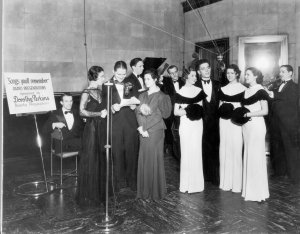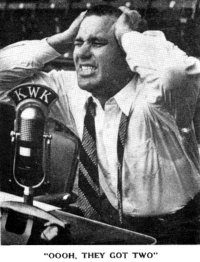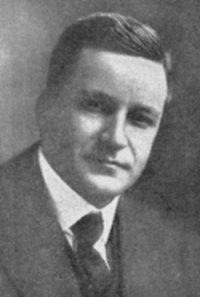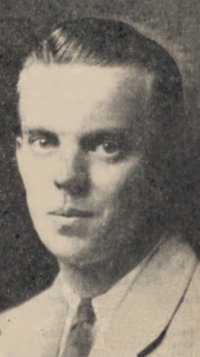Radio Articles
Neil Norman, Third Generation of Stage Family, Now WIL Announcer
Being brought into the world practically backstage and sleeping in a trunk there while his mother and father were on theatrical tours were Neil Norman’s first heritages to the stage and public life. He is now the chief commercial announcer at station WIL.
He has come to the radio from the stage and his so doing is the first break in a long line of theatrical family. He is the third generation to follow the stage. In fact he was so sold on the triumphant virtues of the stage over the radio that he almost missed going on the air altogether.
Back in 1923 when radio was a very small “pup”, he was leader of an orchestra and master of ceremonies in a theater in Sioux City, Iowa. He was offered a job as an announcer but he thought that radio was still very much of a toy and might never amount to very much so he continued his dramatic career. He thinks that is a rather good story on himself.
About four years later, he was again convinced of the possibilities of radio for entertainment and expressive purposes and went on the air again in Billings, Montana. He went thence to Salt Lake and to Waterloo, Iowa stations before coming here.
He and Franklyn MacCormack, program director at WIL, trouped together one time about three years ago and when MacCormack came here, he came to St. Louis to work with him.
Versatility seems rather a weak word to describe his attributes for he has been an orchestra leader, really broke into the air by singing baritone solos, has played in dramatic and humorous plays all over the country.
He is now designated as commercial announcer because he has that persuasive note in his voice which presents selling talks with the least possible emphasis on the selling points and the maximum of entertainment qualities. He has written continuities and provided sound effects during his radio career and has thus filled every known capacity about the station.
Claire Lunden, soprano, heard frequently over WIL is his wife.
(Originally published in Radio & Entertainment 5/28/1932)



